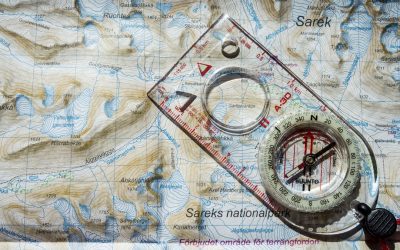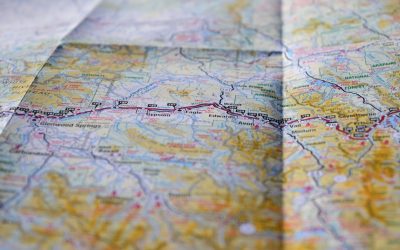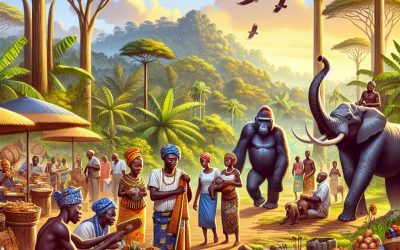World Geography
Geography is the study of the Earth’s landscapes, environments, and the relationships between people and their surroundings. It encompasses both the physical aspects of the Earth, such as its landforms, bodies of water, and climate, as well as the human aspects, including population distribution, cultures, and economies. World geography is a broad field that seeks to understand the complexities of our planet and how humans interact with it. By studying world geography, we can gain a deeper appreciation for the diversity of our planet and the interconnectedness of its various regions.
Geography is a multidisciplinary field that draws on elements of physical science, social science, and humanities. It involves the use of maps, spatial analysis, and geographic information systems (GIS) to understand the Earth’s surface and the processes that shape it. World geography also encompasses the study of human geography, which examines the ways in which people and their activities are distributed across the Earth. By understanding world geography, we can better appreciate the environmental, cultural, and economic challenges facing different regions of the world. This knowledge is crucial for addressing global issues such as climate change, resource management, and international development.
The Five Oceans and Seven Continents
The Earth’s surface is divided into five major oceans: the Pacific, Atlantic, Indian, Southern (or Antarctic), and Arctic Oceans. These vast bodies of water play a crucial role in regulating the Earth’s climate and supporting diverse marine ecosystems. The oceans also serve as important transportation routes and a source of food and other natural resources for human societies around the world.
In addition to the oceans, the Earth’s landmasses are divided into seven continents: Africa, Antarctica, Asia, Europe, North America, Australia (or Oceania), and South America. Each continent has its own unique physical and cultural characteristics, shaped by millions of years of geological processes and human history. From the deserts of Africa to the rainforests of South America, the continents offer a rich tapestry of landscapes and environments for exploration and study.
Major Mountain Ranges and Deserts
The Earth’s surface is also marked by major mountain ranges and deserts that have shaped the planet’s physical and cultural landscapes. The Himalayas, for example, are the highest mountain range in the world and are home to diverse ecosystems and cultures in countries such as India, Nepal, and Bhutan. The Andes in South America, the Rockies in North America, and the Alps in Europe are other prominent mountain ranges that have influenced human settlement patterns and economic activities.
Deserts cover about one-third of the Earth’s land surface and are characterized by low precipitation and extreme temperatures. The Sahara Desert in Africa is the largest hot desert in the world, while the Gobi Desert in Asia is one of the largest cold deserts. Deserts are not only home to unique flora and fauna but have also been important trade routes and cultural crossroads throughout history.
Climate Zones and Biomes
The Earth’s climate is influenced by a variety of factors, including latitude, altitude, ocean currents, and prevailing winds. As a result, the planet is divided into different climate zones, each with its own characteristic weather patterns and ecosystems. The equator, for example, experiences a tropical climate with high temperatures and heavy rainfall, while the polar regions have a cold and dry climate.
These climate zones give rise to different biomes, or large ecological areas characterized by distinct plant and animal communities. The tropical rainforest biome, found near the equator, is home to a diverse array of species and is vital for regulating the Earth’s climate. The grasslands biome, found in regions such as the African savannah and North American prairies, supports grazing animals and has been important for human agriculture throughout history.
Human Geography and Population Distribution
Human geography examines the ways in which people and their activities are distributed across the Earth’s surface. It encompasses topics such as population growth, migration patterns, urbanization, and cultural diversity. Understanding human geography is crucial for addressing global challenges such as poverty, inequality, and environmental degradation.
Population distribution is uneven across the world, with some regions experiencing rapid population growth while others are declining. The majority of the world’s population lives in Asia, particularly in countries such as China and India. Urban areas are also growing rapidly, with more than half of the world’s population now living in cities. This trend has significant implications for infrastructure development, resource management, and social inequality.
Historical and Cultural Geography
Historical geography examines how human activities have shaped the Earth’s landscapes over time. It explores topics such as colonialism, trade routes, and the rise and fall of empires. Cultural geography focuses on how human cultures have developed in different regions of the world and how they interact with their environments.
The Silk Road, for example, was an ancient trade route that connected China with Europe and facilitated the exchange of goods, ideas, and technologies across Eurasia. This historical trade route had a profound impact on the development of cultures and economies along its path. Similarly, cultural geographers study how different societies have adapted to their environments through practices such as agriculture, architecture, and religious beliefs.
The Importance of Geographic Knowledge
Geographic knowledge is crucial for addressing global challenges such as climate change, resource management, and international development. By understanding world geography, we can better appreciate the environmental, cultural, and economic challenges facing different regions of the world. This knowledge is crucial for addressing global issues such as climate change, resource management, and international development.
Geographic knowledge also helps us to understand our interconnectedness with other regions of the world. By studying world geography, we can gain a deeper appreciation for the diversity of our planet and the interconnectedness of its various regions. This understanding can foster a sense of global citizenship and empathy for people from different cultures and backgrounds.
In conclusion, world geography is a complex and multifaceted field that encompasses both physical and human aspects of the Earth’s landscapes. By studying world geography, we can gain a deeper appreciation for the diversity of our planet and the interconnectedness of its various regions. This knowledge is crucial for addressing global challenges such as climate change, resource management, and international development. It also helps us to understand our interconnectedness with other regions of the world and fosters a sense of global citizenship.
FAQs
What is world geography?
World geography is the study of the Earth’s landscapes, environments, and the relationships between people and their environments. It encompasses the physical features of the Earth, as well as the human activity that takes place on it.
Why is world geography important?
World geography is important because it helps us understand the world around us. It provides insights into the physical and human processes that shape our planet, and helps us make informed decisions about how to interact with our environment.
What are the main branches of world geography?
The main branches of world geography include physical geography, which focuses on the Earth’s natural features and processes, and human geography, which examines the relationships between people and their environments.
How does world geography impact our daily lives?
World geography impacts our daily lives in numerous ways, from influencing the weather and climate we experience, to shaping the availability of natural resources and influencing the distribution of populations and cultures around the world.
What are some key concepts in world geography?
Key concepts in world geography include location, place, human-environment interaction, movement, and region. These concepts help geographers understand and interpret the world around them.
Climate Zones Of Gabon: Different climate regions Of Gabon
Gabon, located on the west coast of Central Africa, is a country known for its rich biodiversity and diverse climate zones. The country is divided into several distinct climate zones, each with its own unique characteristics and weather patterns. Understanding these climate zones is crucial for anyone planning to visit or do business in Gabon, as it can greatly impact travel plans, agricultural practices, and overall quality of life. From the equatorial climate zone in the north to the coastal climate zone in the west and the highland climate zone in the east, Gabon offers a wide range of climates that contribute to its natural beauty and ecological diversity. Summary Gabon has a diverse range of climate zones, each with its own unique characteristics and weather patterns. The Equatorial Climate Zone in Gabon is characterized by high temperatures, heavy rainfall, and high humidity throughout the year. The Tropical Climate Zone experiences distinct wet and dry seasons, with high temperatures and moderate to high rainfall. The Transition Zone in Gabon has a mix of characteristics from both the equatorial and tropical zones, with varying levels of rainfall and temperature. The Coastal Climate Zone in Gabon experiences milder temperatures and lower rainfall compared to other zones, with a more moderate climate influenced by the ocean. Equatorial Climate Zone The equatorial climate zone covers the northern part of Gabon and is characterized by high temperatures, heavy rainfall, and high humidity throughout the year. This region experiences very little variation in temperature, with average highs of around 30°C and lows of around 23°The equatorial zone is also known for its dense rainforests, which...
Political Boundaries of Gabon: Provinces, Districts, or Historical Boundaries.
Gabon, a country located on the west coast of Central Africa, is known for its rich biodiversity and diverse culture. The political boundaries of Gabon are defined by its borders with Equatorial Guinea to the northwest, Cameroon to the north, the Republic of the Congo to the east and south, and the Atlantic Ocean to the west. The country covers an area of 267,667 square kilometers and is divided into nine provinces and further subdivided into 50 districts. The political boundaries of Gabon have evolved over time, influenced by historical, geographical, and cultural factors. These boundaries play a crucial role in shaping the governance, administration, and development of the country. Summary Gabon’s political boundaries are defined by its borders with Cameroon, Equatorial Guinea, and the Atlantic Ocean. Gabon is divided into 9 provinces, each with its own administrative capital and governor. The provinces are further divided into 50 districts, each with its own district chief and administrative structure. Gabon’s historical boundaries have been shaped by colonialism and the scramble for Africa by European powers. The political boundaries of Gabon have a significant impact on governance, resource allocation, and infrastructure development. Challenges and controversies surrounding Gabon’s political boundaries include disputes with neighbouring countries and issues of resource exploitation. The future of Gabon’s political boundaries will likely be influenced by regional integration efforts and the need for sustainable development. Provinces of Gabon Gabon is divided into nine provinces, each with its own unique characteristics and cultural heritage. The provinces are Estuaire, Haut-Ogooué, Moyen-Ogooué, Ngounié, Nyanga, Ogooué-Ivindo, Ogooué-Lolo, Ogooué-Maritime, and Woleu-Ntem. Each province is further divided into districts, which are the primary...
Gabon
Gabon (République Gabonaise (Gabonese Republic)) Capital: Libreville Population (Estimated July 2012): 1,608,321 Area: 267,667 km2 or 103,347 mi2 Currency: CFA Franc (CFAF) Official Language: French Political Information: Presidential Republic Official Religion: No Official Religion(approximately 55% – 75% of the population are Christian, with the remainder animist and Muslim less than 1%) Highest Mountain: Mont Bengoué at 1,070m or 3,510 ft GDP Official Exchange Rate (OER is more precise at gauging a countries economic power) (Estimated 2011): $16.7 billion (US$) or (GBP) GDP (OER) Per Capita (per member of the population estimated 2011): (US$) or (GBP) GDP Purchasing Power Parity (PPP is good for gauging living conditions and use of resources but not as accurate as OER. This data has been calculated based on the sum value of all goods and services produced in the country valued at prices prevailing in the United States) (Estimated 2011): $24.28 billion (US$) or (GBP) GDP (PPP) Per Capita (per member of the population estimated 2011): $16,000 (US$) or (GBP) Time Zone (UTC): +1:00 Wildlife: Counties/Provinces/States: Provinces; Estuaire, Haut-Ogooue, Moyen-Ogooue, Ngounie, Nyanga, Ogooue-Ivindo, Ogooue-Lolo, Ogooue-Maritime, Woleu-Ntem Leaders: President Ali Bongo Ondimba with Prime Minister Raymond Ndong Sima. Additional: Gained Independence from France on the 17th of August 1960. Sources: CIA World Fact Book, Encyclopaedia Britannica. Gabon Gabon, officially known as the Gabonese Republic, is a country located on the west coast of Central Africa. It is bordered by Equatorial Guinea to the northwest, Cameroon to the north, the Republic of the Congo on the east and south, and the Atlantic Ocean to the west. The capital city of Gabon is Libreville, which is also the largest city in the country. The official language is French, and the...
Natural Resources of Gabon: Where Natural Resources are located In Gabon
Gabon, located on the west coast of Central Africa, is blessed with a rich abundance of natural resources. The country’s natural resources include forests, minerals, oil and gas, water, wildlife, and biodiversity. These resources play a crucial role in the country’s economy and are vital for the livelihoods of the Gabonese people. The sustainable management of these resources is essential for the long-term development and prosperity of the nation. Gabon’s natural resources have attracted significant attention from both domestic and international investors. The government has implemented policies to promote sustainable development and conservation of these resources, while also seeking to leverage them for economic growth. The country’s natural beauty and diverse ecosystems make it a unique and valuable resource for the world. As such, Gabon has made efforts to balance the exploitation of its resources with conservation efforts to ensure their preservation for future generations. Summary Gabon is rich in natural resources, including forests, minerals, oil and gas, water, and wildlife. The forests in Gabon cover about 85% of the country and are home to a diverse range of plant and animal species. Gabon has significant mineral resources, including manganese, iron, gold, and uranium. The oil and gas industry is a major contributor to Gabon’s economy, with the country being one of the largest oil producers in sub-Saharan Africa. Gabon’s water resources are abundant, with numerous rivers and lakes providing important sources of freshwater for the country. Forest Resources in Gabon Gabon is home to one of the largest intact tropical rainforests in the world, covering approximately 85% of the country’s land area. These forests are a vital natural...
Cultural or Historical Sites of Gabon: Important Cultural Landmarks or Historical Sites in Gabon
Gabon, a country located on the west coast of Central Africa, is home to a rich tapestry of cultural and historical sites that offer a glimpse into the country’s fascinating past. From the lush rainforests to the vibrant cities, Gabon’s cultural and historical sites are a testament to the country’s diverse heritage and the resilience of its people. The country’s history is deeply intertwined with the slave trade, colonialism, and the struggle for independence, and these themes are reflected in the various cultural and historical sites that can be found throughout Gabon. One of the most striking aspects of Gabon’s cultural and historical sites is the way in which they are integrated into the natural landscape. From the dense rainforests to the winding rivers, these sites are not only a testament to the country’s history but also a celebration of its natural beauty. Whether it’s the sacred Ivindo River and the Kongou Falls or the Lopé-Okanda World Heritage Site, Gabon’s cultural and historical sites offer visitors a unique opportunity to explore the country’s history while immersing themselves in its stunning natural surroundings. Summary Gabon is home to a rich cultural and historical heritage, with a variety of sites that showcase the country’s unique history and traditions. The Sacred Ivindo River and the Kongou Falls offer visitors a chance to experience the natural beauty and spiritual significance of these iconic landmarks. The Historical Slave Route in Loango National Park provides a sobering look at Gabon’s role in the transatlantic slave trade and its impact on the country’s history. The Lopé-Okanda World Heritage Site is a must-visit for those interested in...
Cultural or Historical Sites of France: Important Cultural Landmarks or Historical Sites in France
The Eiffel Tower, one of the most iconic landmarks in the world, is a symbol of France’s cultural heritage. Designed by Gustave Eiffel and completed in 1889, the tower was initially met with controversy and criticism, but it has since become a beloved symbol of Paris and France as a whole. Standing at 1,063 feet tall, the Eiffel Tower offers breathtaking panoramic views of the city and has become a must-see attraction for tourists from around the world. The Eiffel Tower’s intricate iron lattice design is a testament to the architectural and engineering prowess of the late 19th century. Its unique structure and graceful curves have inspired artists, architects, and engineers for generations. The tower’s significance goes beyond its architectural beauty; it has become a symbol of romance, adventure, and the enduring spirit of France. Whether it’s illuminated against the night sky or standing tall in the daylight, the Eiffel Tower continues to captivate and inspire all who gaze upon it. Summary The Eiffel Tower is an iconic symbol of France’s cultural heritage, representing the country’s engineering prowess and artistic vision. The Louvre Museum houses some of the world’s most famous art and historical artifacts, making it a must-visit for anyone interested in culture and history. Notre-Dame Cathedral is a stunning example of French Gothic architecture, showcasing the country’s mastery of intricate design and craftsmanship. Mont Saint-Michel is a unique island abbey with deep historical significance, offering visitors a glimpse into France’s medieval past. The Palace of Versailles is a grandiose display of French royalty and history, reflecting the opulence and power of the country’s monarchs. The Louvre Museum:...
Natural Resources of France: Where Natural Resources are Located in France
France is a country rich in natural resources, which have played a significant role in shaping its economy and culture. From agricultural and mineral resources to energy, forestry, and water resources, France has a diverse range of natural assets that have contributed to its development and prosperity. The country’s natural resources have also made it an attractive destination for tourists, who are drawn to its picturesque landscapes and bountiful natural beauty. The abundance of natural resources in France has allowed the country to become a major player in the global market, particularly in the agricultural and energy sectors. With a strong focus on sustainability and conservation, France has managed to harness its natural resources in a way that benefits both its economy and the environment. In this article, we will explore the various natural resources that France possesses, as well as the conservation and management efforts that are in place to ensure their sustainable use for future generations. Summary France is rich in natural resources, including agricultural, mineral, energy, forestry, and water resources. The agricultural sector in France is highly developed, with a focus on wheat, corn, and wine production. France is a leading producer of minerals such as coal, iron ore, and bauxite, which are essential for its industrial sector. The country relies heavily on nuclear power for its energy needs, making it one of the largest producers of nuclear energy in the world. France has extensive forests, which are managed sustainably to ensure the conservation of biodiversity and the production of timber. Agricultural Resources in France Agriculture is one of the most important natural resources in France,...
Political Boundaries of France: Provinces, Districts, or Historical Boundaries.
France, officially known as the French Republic, is a country located in Western Europe. It is bordered by Belgium, Luxembourg, Germany, Switzerland, Italy, Monaco, Spain, Andorra, and the Mediterranean Sea. The political boundaries of France have evolved over centuries, shaping the country’s identity and influencing its cultural, social, and economic development. From the ancient Gauls to the modern French Republic, the political boundaries of France have been defined by a complex interplay of historical events, territorial disputes, and geopolitical considerations. Understanding the provinces, districts, and historical boundaries of France is essential to comprehending the country’s rich and diverse heritage. Summary France is divided into 18 regions, which are further divided into 101 departments, each with its own unique identity and culture. The provinces of France, such as Brittany and Normandy, have historical and cultural significance, and many still retain a strong regional identity. France is divided into 342 districts, which are administrative divisions that play a role in local governance and public services. The historical boundaries of France have been shaped by centuries of conflict, conquest, and diplomacy, leading to a diverse and complex territorial landscape. The evolution of France’s political boundaries has been influenced by factors such as wars, treaties, and administrative reforms, shaping the country’s modern territorial organization. The impact of political boundaries on French identity is significant, as regional differences and historical legacies continue to shape the cultural and political landscape of the country. The future of France’s political boundaries is likely to be influenced by ongoing debates about decentralization, regional autonomy, and the preservation of cultural heritage. Provinces of France France is divided into 18...
Climate Zones Of France: Different Climate Regions Of France
France is a country known for its diverse climate zones, which range from the warm Mediterranean climate in the south to the cooler oceanic climate in the west and the continental climate in the east. These climate zones are influenced by various factors such as latitude, proximity to the sea, and elevation. Understanding the different climate zones of France is essential for anyone planning to visit or live in the country, as it can greatly impact the type of activities and lifestyle that can be enjoyed in each region. In this article, we will explore the various climate zones of France, including the Mediterranean, oceanic, continental, mountain, and semi-continental regions, and discuss the unique characteristics and features of each. Summary France has a diverse range of climate zones, each with its own unique characteristics and weather patterns. The Mediterranean climate region in the south of France is known for its hot, dry summers and mild, wet winters. The oceanic climate region, found in the west of France, experiences mild temperatures and high levels of rainfall throughout the year. The continental climate region in the east of France has hot summers and cold winters, with a wide temperature range. The mountain climate region, located in the Alps and Pyrenees, has cold, snowy winters and cool summers, with high altitude influencing the climate. The semi-continental climate region in central France has hot summers and cold winters, with moderate rainfall throughout the year. Mediterranean Climate Region The Mediterranean climate region in France is located in the southern part of the country, including the French Riviera and Provence. This region is characterized by...
Terrain and Topography of France: mountains, valleys, and plains.
France is a country renowned for its diverse and stunning terrain and topography. From the majestic Alps and Pyrenees mountains to the picturesque valleys, vast plains, and beautiful coastal and island landscapes, France offers a rich tapestry of natural beauty. The country’s varied terrain has been shaped by geological processes over millions of years, resulting in a landscape that is as diverse as it is breathtaking. This article will explore the different aspects of France’s terrain and topography, highlighting the unique features that make it a truly remarkable destination for nature lovers and outdoor enthusiasts. Summary France has a diverse terrain and topography, ranging from mountains to plains and coastal landscapes. The French Alps and Pyrenees mountains are majestic and offer a range of outdoor activities for visitors. The picturesque valleys of France are perfect for exploring and offer stunning natural beauty. The vast and diverse plains of France are home to agricultural activities and contribute to the country’s economy. The coastal and island landscapes of France offer beautiful beaches and unique island experiences for tourists. The Majestic French Alps and Pyrenees Mountains The French Alps and Pyrenees mountains are two of the most iconic mountain ranges in Europe, offering some of the most breathtaking and challenging terrain for outdoor enthusiasts. The French Alps, located in the eastern part of the country, are home to some of the highest peaks in Europe, including Mont Blanc, which stands at an impressive 4,810 meters. The rugged terrain of the Alps is characterized by steep slopes, deep valleys, and dramatic rock formations, making it a popular destination for mountaineers, hikers, and skiers....
History of France
The Gauls were a Celtic people who inhabited the region that is now modern-day France. They were known for their fierce warrior culture and their intricate metalwork. In 58 BC, Julius Caesar launched a military campaign to conquer Gaul, which he documented in his famous work, “The Gallic Wars.” The Gauls put up a valiant resistance, but ultimately, they were no match for the might of the Roman army. Caesar’s conquest of Gaul brought the region under Roman control and laid the foundation for the Romanization of the area. The Roman conquest of Gaul had a profound impact on the region. It brought Roman law, language, and culture to the Gauls, and it paved the way for the spread of Christianity. The Romans built roads, aqueducts, and cities, transforming Gaul into a prosperous and cosmopolitan province of the Roman Empire. However, the Romanization of Gaul was not without its challenges. The Gauls continued to resist Roman rule, and there were several uprisings and revolts against the Roman authorities. Despite this, the Roman conquest of Gaul laid the groundwork for the development of France as a nation and left a lasting legacy on its culture and society. Summary The Gauls fiercely resisted Roman conquest, but ultimately fell to Roman rule in 51 BC. The Merovingian Dynasty saw the rise of the Franks as a dominant force in Western Europe. The Carolingian Empire, under Charlemagne, expanded and solidified Frankish power in the region. The Hundred Years’ War and the rise of Joan of Arc marked a significant period of conflict and national identity for France. The French Revolution and Napoleonic Era...
Population Density of France
Population density refers to the number of people living in a specific area, usually measured in square kilometres or square miles. It is an important demographic indicator that provides insights into the distribution of people within a country or region. In the case of France, population density varies significantly across the country, with some areas being densely populated while others are sparsely populated. Understanding population density is crucial for urban planning, resource allocation, and infrastructure development. It also plays a key role in shaping social, economic, and environmental dynamics within a region. Summary Population density refers to the number of people living in a specific area, usually measured in square kilometres or square miles. Factors affecting population density in France include natural resources, climate, economic opportunities, and government policies. Urban population density in France is higher than rural population density, with cities like Paris having the highest population density in the country. Historical changes in population density in France have been influenced by events such as industrialisation, urbanisation, and migration patterns. Regional variations in population density in France can be seen between different regions, with the Île-de-France region having the highest population density. Factors Affecting Population Density in France Several factors influence population density in France. One of the primary factors is geographical features. The availability of fertile land, access to water sources, and favourable climate can attract people to settle in certain areas, leading to higher population density. For example, the densely populated regions of Île-de-France and Provence-Alpes-Côte d’Azur benefit from favourable geographical features, including arable land and a Mediterranean climate. On the other hand, mountainous and less...











